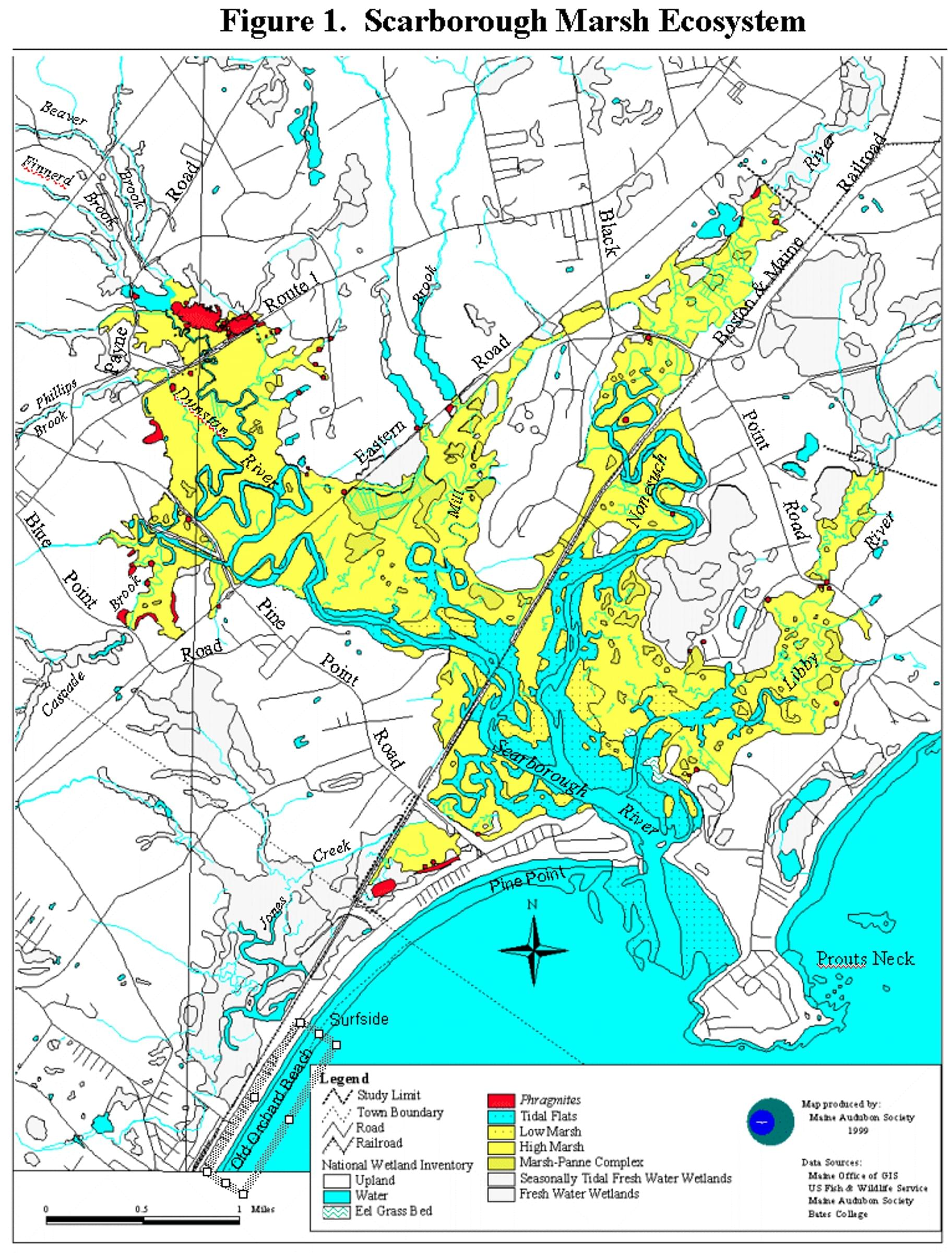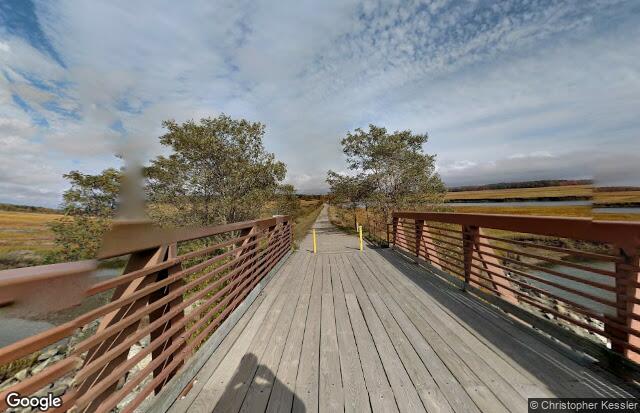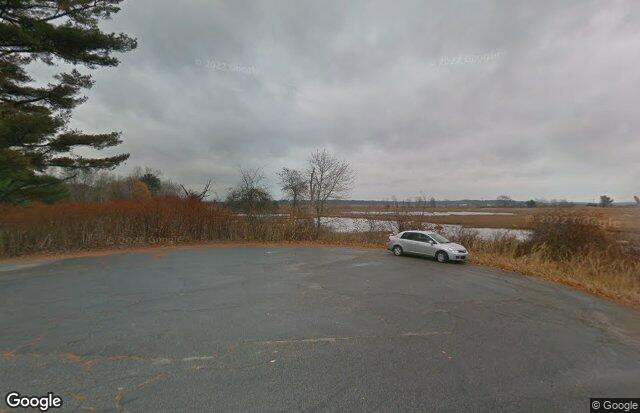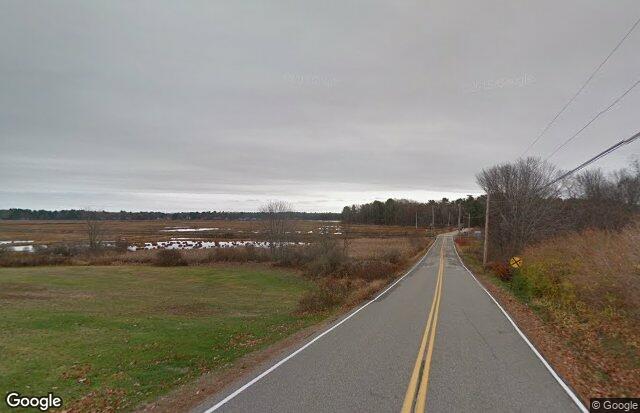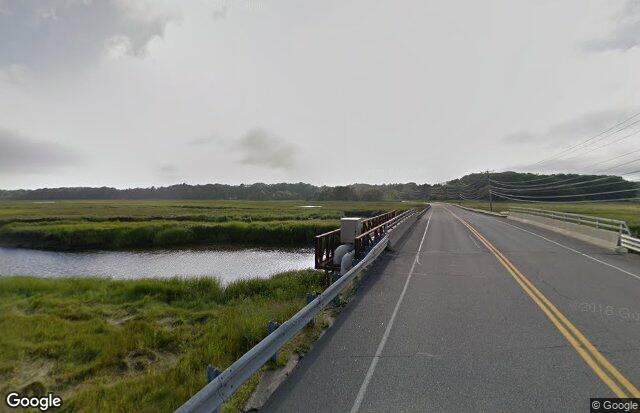
Scarborough Marsh
Scarborough Marsh
Scarborough, Maine 04074
Official WebsiteScarborough Marsh (Maine Birding Trail) webpage
Scarborough Marsh map
Tips for Birding
Scarborough Marsh is one of the top places to bird in Maine. It encompasses over 3,000 acres of estuarine salt marsh, 15% of the state’s total. Nelson’s and saltmarsh sparrows overlap and interbreed here. Flocks of glossy ibis forage throughout the marsh. Great blue herons, great egrets, and snowy egrets are common. Little blue herons are regular. Tri-colored herons are uncommon.
The marsh is very wide and the Spartina grass is thick, hiding many of the pools. This is a good place for a spotting scope. There is a seasonal Maine Audubon Nature Center midway along Pine Point Road. The center can provide trail maps, birding tips, and a bird-sighting register. It also rents canoes for access to the estuary. In season, there are regularly scheduled nature trips available from Maine Audubon.
From the Maine Audubon parking lot, scan the marsh slowly, noting the walking path and bridge to the south. Take the time to explore the pools on the opposite side of the road. This is one of the best places for a close view of shorebirds, particularly greater and lesser yellowlegs, but also semipalmated sandpipers, stilt sandpipers, and short-billed dowitchers. Long-billed dowitchers are rare in Maine, but they occur annually in this spot. Just south along Pine Point Road, Eastern Road (now a walk/bike path) provides an opportunity to stroll deeply into the marsh along some of the best salt flats in the refuge. This is the preferred place to see both sharp-tailed sparrows. High tide has a tendency to push sparrows closer to the path for easy viewing. Willets breed here. Red knots, Hudsonian godwits, and stilt sandpipers are regular in small numbers in August-September. Be aware that harbor seals swim all the way into the marsh at high tide and may be seen when least expected.
US-1 through Scarborough passes through the north edge of Scarborough Marsh. Drive south along US-1 from Portland, cross the marsh, and turn left onto Pine Point Road (ME-9) at Dunstan Landing. Proceed to the Maine Audubon Nature Center parking lot to begin the adventure. From Saco, drive north on US-1. Pine Point Road will be a right turn at Dunstan Landing.
About this Location
The Scarborough Marsh Wildlife Management Area is one of the department’s most visited wildlife management areas. Located in the southern Maine coastal towns of Scarborough and Old Orchard Beach, this 3,000-acre property is comprised of tidal creeks, salt marsh, freshwater wetlands, and uplands.
Scarborough Marsh receives thousands of visitors each year, for a variety of reasons including such popular activities as hunting, birding, boating, and fishing. Hunters visit primarily for waterfowl and upland game birds.
The Marsh is a destination for bird watchers, which are drawn to the area for the plethora of species that can be found there at different times of the year, including saltmarsh sparrows, egrets, sandpipers, glossy ibis, and many others. Summertime visitors often visit Maine Audubon’s Marsh Center which has informational displays, guided tours, and rentable canoes and kayaks.
Parking lots on ME-9 (Pine Point Road) and ME-207 (Black Point Rd) provide great access via the Eastern Trail, an old railroad right of way that runs through the marsh that is now used as a recreational trail for pedestrians and bicyclists. There’s an observation tower accessible to the public off from Manson Libby Road, which provides a great view of the marsh and the adjacent upland. The tower is accessible on foot via a gravel road off Manson Libby Road or a mowed path from the parking lot next to our storage building. There’s a public boat launch on Clay Pits Road, a couple of carry-in sites with small parking areas on ME-9, and other carry-in boat access elsewhere on the marsh.
Since the Department acquired the property in 1959, several habitat improvement projects have been undertaken, including restoring the natural salt marsh. In recent years, we’ve undertaken efforts to reduce invasive Phragmites in the marsh, performed prescribed fires to maintain fields, and conducted a timber harvest to promote young forest habitat to benefit species such as New England cottontail (a state endangered species), American woodcock, brown thrasher, and many others.
Content from Official Website and Scarborough Marsh (Maine Birding Trail) webpage
Last updated January 21, 2024
